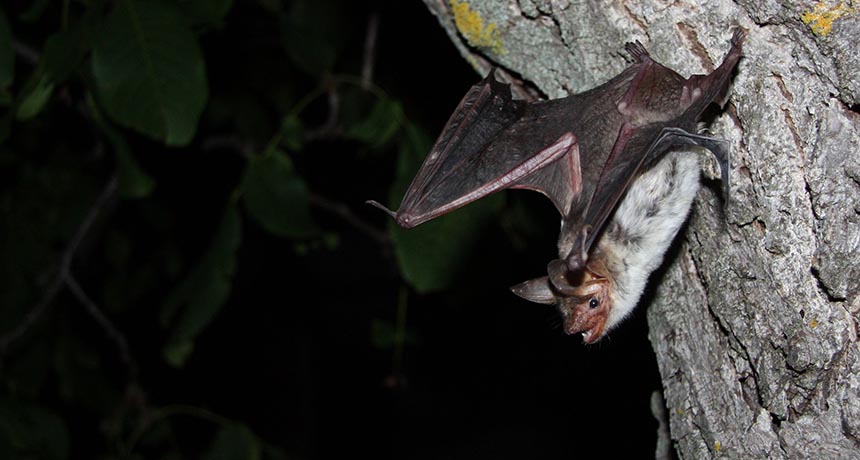Why bats crash into windows

Walls can get the best of clumsy TV sitcom characters and bats alike.
New lab tests suggest that smooth, vertical surfaces fool some bats into thinking their flight path is clear, leading to collisions and near misses.
The furry fliers famously use sound to navigate — emitting calls and tracking the echoes to hunt for prey and locate obstacles. But some surfaces can mess with echolocation.
Stefan Greif of the Max Planck Institute for Ornithology in Seewiesen, Germany, and colleagues put bats to the test in a flight tunnel. Nineteen of 21 greater mouse-eared bats (Myotis myotis) crashed into a vertical metal plate at least once, the scientists report in the Sept. 8 Science. In some crashes, bats face-planted without even trying to avoid the plate.
Smooth surfaces act as acoustic mirrors, the team says: Up close, they reflect sound at an angle away from the bat, producing fuzzier, harder-to-read echoes than rough surfaces do. From farther away, smooth surfaces don’t produce any echoes at all.
Infrared camera footage of wild bat colonies showed that vertical plastic plates trick bats in more natural settings, too.
Crash reel
This video shows three experiments into how smooth surfaces affect bat flight. In one lab test, a vertical metal plate gave a bat the illusion of a clear flight path, causing it to crash into the barrier. In a second lab test, a horizontal metal plate created the illusion of water; the bat dips to surface to take a sip. Finally, near a natural bat colony, a bat collides with a vertically hung plastic plate, showing that smooth surfaces could impact bats in the wild, as well.